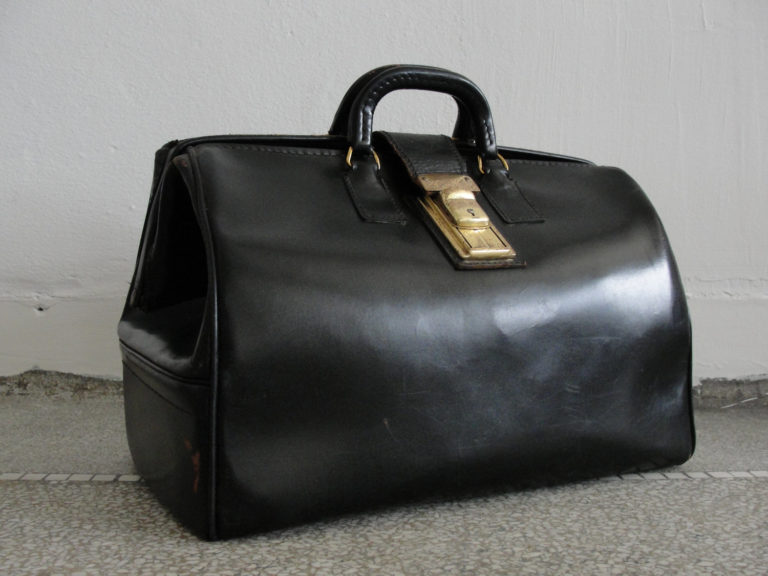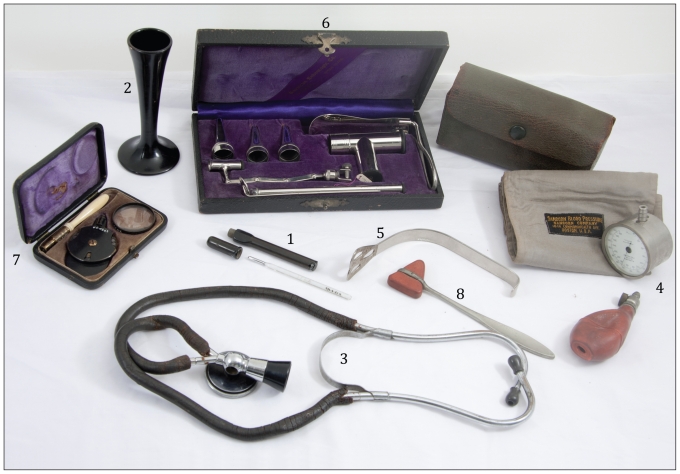Physicians Bag
Jump to navigation
Jump to search
Items
- thermometer (long slender glass mercury prismatic clinical thermometer) - carried in a Bakelite case
- monaural stethoscope (constructed in one piece of turned ebony with a hollow tapered ear piece and circular chest piece)
- sphygmomanometer (with a leather pouch, a rubber bulb, valve and cloth-armed sleeve and a domed blood-pressure gauge)
- tongue depressor (Weeder tongue depressor had a fenestrated, grooved end for tongue depression and a handle with a finger hook)
- otoscope (otoscope set includes specula and other attachments in a velvet-lined case)
- ophthalmoscope (Dewecker’s refraction ophthalmoscope consists of a head with 24 lenses, one open aperture and a round concave mirror in a metal frame with an ivory handle. It is stored in a black leather case with satin and velvet lining.)
- percussion hammer (the Taylor percussion hammer was an essential part of the neurological assessment.)
- hemoglobinometer (laboratory equipment)
- uninometer (laboratory equipment)
Vintage Drugs
- Drugs carried included morphine, atropine, strychnine and digitalis, phenacetin, barbital...
- The spirit lamp was used to assure aseptic technique (item 1)
- Hollow pointed vaccinating lancet (item 2) features a metal hollow-pointed blade that swivels on a rivet between two horned handles. This is an example of one of the vaccinators developed during the 19th century for use in the campaign to prevent smallpox.
- Pocket medicine pharmacy case (item 3). This is a representative leather pocket medicine case, which opens with flaps on each side and contains two rows of twelve bottles. The physician provided the patient with the common emergency drugs.
- Item 4 is a set of catheters and Lister’s bougies. The eight instruments in a leather case included four catheters ranging from size from 2 to 6, and three bougies ranging from size 3 to 7. Urinary retention was a major emergency that could be initially managed in the home, while bougies were used for the long-term management of urethral strictures.


